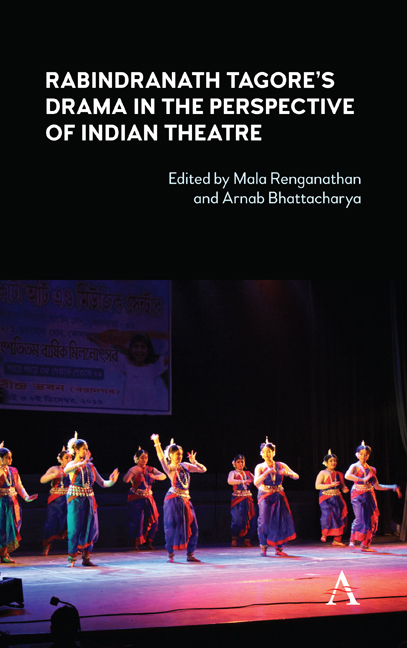Chapter 2 - Rabindrik-Nritya, Tagore’s New Aesthetic forIndian Dramatic Art: Discourse and Practice
Published online by Cambridge University Press: 20 January 2022
Summary
While discussing Tagore's genius as a dramatist, we often tend to neglect his close association with the art of dance. My contention in this chapter is that for Tagore, dance was not merely an art of entertainment enhancing the pleasure of mind, but a seminal vehicle for the dissemination of art and education. He believed that through the pursuit of truth and purity within, one can achieve the true essence of existence. Ample effort had been directed towards exploring this quest across a span of Tagore's genres like poetry, essay, novel and drama. Yet it is necessary to explore the issue of what role does dance (a somewhat neglected concern in Tagorean scholarship) play in acquiring the ideals of his constructive knowledge practice. Similarly, it is relevant to understand why, despite acute disregard on the part of his committed readership, the so-called cultured, educated middle class, did a more mature and experienced Tagore return to this form of art in the later phase of his life. By way of brief discussions of the discourse and practice of Rabindrik-Nritya, I shall try to assess how it bears out his philosophy of life. However, the principal texts of discussion in this chapter are not only Tagore's dance-drama texts but also some of his essays on art and aesthetics such as‘What Is Art?’ (1916), ‘Art and Tradition’ (1926) and ‘The Religion of an Artist’ (1926), through discussions of which I would try to look at Rabindrik-Nritya as an art form comparable to Tagore's music and paintings, in that it transcends mere norms and rules and gestures towards a vision of an all-encompassing Oneness.
I would like to argue that the art of dance for Tagore was a blend of nritya and natya, that is, a fusion of music, drama, instruments, acting and expression, all of which helped Tagore directly and indirectly to make a strong sociocultural statement and secured him a position in the performance practices that flourished between the national and pro-British cultural practice of colonial India. Beginning with his initiation into dance practice over the early years, his travelogues and interactions with international dancers, dance movements and artists to his progression towards the more structured creations of dance drama, I would like to attempt an exploration towards understanding Tagore's involvement with the art of dance for this study.
- Type
- Chapter
- Information
- Publisher: Anthem PressPrint publication year: 2020



